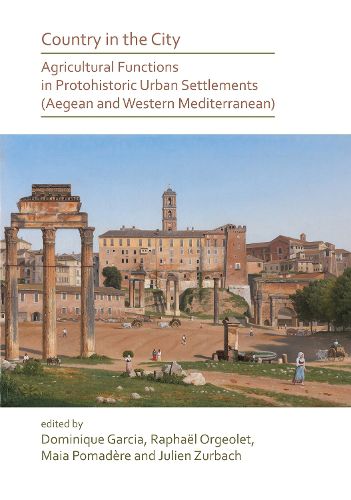Readings Newsletter
Become a Readings Member to make your shopping experience even easier.
Sign in or sign up for free!
You’re not far away from qualifying for FREE standard shipping within Australia
You’ve qualified for FREE standard shipping within Australia
The cart is loading…






The existence of an opposition between rural and urban spaces is an important question for our societies, and one that has been posed since the radical transformations of the 20th century and the so-called ‘end of the peasants’. In this context it becomes also a question for archaeologists and historians. This book assembles contributions on the place of agricultural production in the context of urbanization in the Late Bronze and Early Iron Age Mediterranean. The contributions concentrate on the second-millennium Aegean and the protohistoric northwestern Mediterranean. They offer a reflection on the nature of urbanization and its consequences for rural spaces near cities and on the many ways in which rural spaces and agricultural activities may be intertwined with urban spaces - a reconsideration of the very nature of urbanism. A deliberate accent is laid on the comparative perspectives between different regions and periods of Mediterranean protohistory, and on the integration of all kinds of sources and research methods, from texts to survey to environmental archaeology. Highlighted throughout are the original paths followed in the Peloponnese or in the Troad with regard to the Minoan model of urbanization, and the many aspects and periods of Minoan urbanization (as in development in Languedoc vis-a-vis Catalonia). Thus a new perspective on Mediterranean urbanization is offered.
$9.00 standard shipping within Australia
FREE standard shipping within Australia for orders over $100.00
Express & International shipping calculated at checkout
The existence of an opposition between rural and urban spaces is an important question for our societies, and one that has been posed since the radical transformations of the 20th century and the so-called ‘end of the peasants’. In this context it becomes also a question for archaeologists and historians. This book assembles contributions on the place of agricultural production in the context of urbanization in the Late Bronze and Early Iron Age Mediterranean. The contributions concentrate on the second-millennium Aegean and the protohistoric northwestern Mediterranean. They offer a reflection on the nature of urbanization and its consequences for rural spaces near cities and on the many ways in which rural spaces and agricultural activities may be intertwined with urban spaces - a reconsideration of the very nature of urbanism. A deliberate accent is laid on the comparative perspectives between different regions and periods of Mediterranean protohistory, and on the integration of all kinds of sources and research methods, from texts to survey to environmental archaeology. Highlighted throughout are the original paths followed in the Peloponnese or in the Troad with regard to the Minoan model of urbanization, and the many aspects and periods of Minoan urbanization (as in development in Languedoc vis-a-vis Catalonia). Thus a new perspective on Mediterranean urbanization is offered.